Close encounters with hummingbirds at the Observatorio de Colibries
I entered Victoria Lizarralde’s garden, also known as the Observatorio de Colibries (Hummingbird Observatory), and heard the unmistakeable ‘buzz’ of a hummingbird whizzing past my ear. On a cool, damp Sunday morning I had joined a small tour group led by Andes Ecotours and travelled 45 minutes up into the mountains from Bogotá. We headed for a wooden shelter in the corner of the garden, careful to avoid the feeders hanging at various points in the garden. The hummingbirds darted back and forth between the feeders and the surrounding trees and bushes. “That one’s a Glowing Puffleg,” said Chantelle, our guide for the day, indicating towards one of the feeding tables. “See its puffy white legs?”
A Haven for Hummingbirds
Colombia is home to 165 different types of hummingbird, and 18 of these have been registered at the hummingbird observatory which lies in an isolated mountainous area in the state of Cundinamarca, about 25km from Bogotá. Victoria explained that when she moved to the area, she wanted to encourage the local fauna to visit her garden.
“This is a very personal project for me, rooted in my love of nature. When we arrived here, the surrounding area was dedicated to potato and cattle farming. We started planting native flowers and complemented these with bird feeders and gradually, hummingbirds started visiting the garden. The observatory has become a place devoted to their well-being.”
It has been a huge success, having attracted over 2,500 visitors since it opened to the public in 2013. Chantelle du Plessis, originally from South Africa, runs Andes Ecotours with her Colombian husband Andrés Umaña. They started bringing tourists up to the observatory in 2014. “A few years ago, I started to see posts in birding circles about the observatory, and I knew it was a place I had to visit,” she told me. “We spent three hours here and I was blown away by the number of species and the photographic opportunities.”
The hummingbird observatory is a photographer’s dream
On the day of our visit, a group of photographers were already there, with cameras which resembled large weapons. They were poised and ready to trigger another cluster of burst shots as hummingbirds flitted between the feeders and bushes. “This tour is ideal for serious birdwatchers, as there are a lot of target species to be seen,” explained Chantelle. “But even more so for photographers, given the quality of the shots and how close the birds get to visitors.”
As a relative newcomer to bird-watching, I was fascinated by these enigmatic creatures, some of which were as small as large moths. At the other end of the spectrum, a brief flash of blue confirmed the presence of the Great Sapphirewing hummingbird. At up to 17.5cm in length and weighing about 10 grams, this is one of the largest species of hummingbird, and apparently quite elusive. We headed down to the bottom of the garden where it was quieter in the hope that we’d see him or her again. After sitting patiently on a nearby log and watching several Blue-throated Starfrontlets and Black-tailed Trainbearers hover between the nearby trees and feeders, the Great Sapphirewing appeared again in all its glory for just a few seconds at a time, before settling on a branch in a nearby tree, where it stayed for a while and contemplated us and the feeders.
Hummingbirds under threat
Deforestation poses the greatest threat to hummingbird populations in this area. Farmers have cleared land for potato and cattle farming, and property developers continue to build luxury complexes overlooking Bogota. The armed conflict in Colombia has also played a role. Many rural areas beyond the big cities were infiltrated by the FARC and paramilitary groups. This made them no-go areas for outsiders. But La Calera, a town in the mountains less than half an hour from Bogotá, was a relatively safe choice for Bogotanos wanting a break from the city. This led to the widespread development and deforestation of this area, which is about half an hour’s drive from the hummingbird observatory.
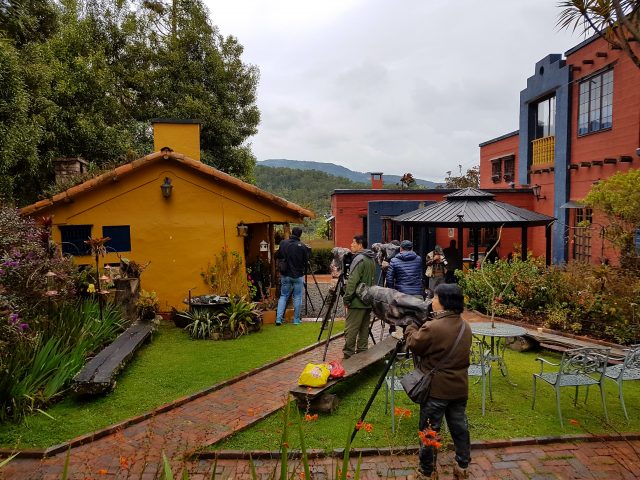
Victoria’s garden, the hummingbird observatory
Ecotourism helps to tackle deforestation and provides an income for locals
On the drive up to the observatory, the road was lined with small restaurants where families and cyclists were having breakfast. Chantelle pointed out how little forest there was left, and explained that what remained was in danger of being felled for further development. I wondered if there was any entity that was working to address this problem.
“I’ve seen little action on the part of NGOs and the government, but more effort from private landowners and ecotourism companies working together to create tours that support conservation efforts.” In the last decade, security in Colombia has improved. Following the signing of the Peace Agreement between the government and the FARC in September 2016, more people are visiting Colombia. As tourism in Colombia increases, many farmers realize the potential for subsidizing their incomes through activities such as bird-watching and are therefore making efforts to conserve the native vegetation.
Although there currently doesn’t appear to be the will at government level to protect the forested areas in the state of Cundinamarca, the government has joined forces with the Tropical Forest Alliance 2020, hosted by the World Economic Forum, in an effort to protect over 60 million hectares of Amazon rainforest in Colombia from commodity-driven deforestation. As Chantelle sees it, the local problem is that central government hasn’t yet recognized the state of Cundinamarca for its natural value.
Ecotourism and environmental education must go hand-in-hand
But people like Victoria, along with ecotourism companies like Andes Ecotours, are helping to gradually change this. The Observatorio de Colibries receives over 50 visitors a week on average. I counted more than twenty visitors during the three hours I was there that Sunday morning. Victoria agrees that tourism can be part of the solution to protecting forested areas. However, she emphasises that this must go hand-in-hand with environmental education. People must understand what they can do at an individual level to protect their natural surroundings.
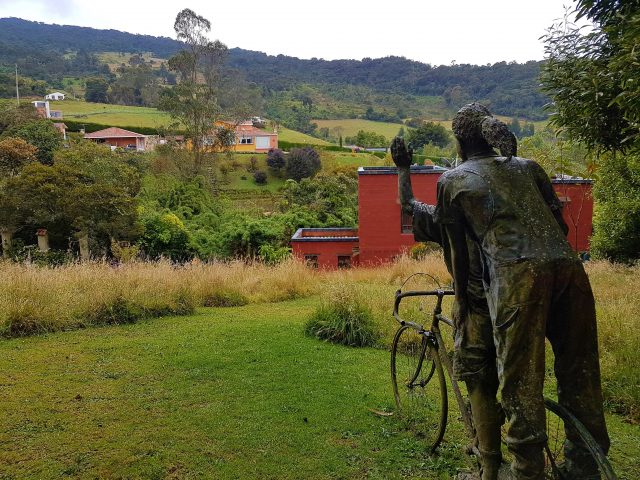
A view across the nearby countryside from the garden
Experience the magic of seeing hummingbirds up-close
We sipped on hot coffee and continued to watch these wonderful birds, learning their magical names. Of the 18 species they have registered at the hummingbird observatory, we saw 12 that morning. These included the White-bellied Woodstar, the Tyrian Metaltail and the Amethyst-throated Sunangel. One which made a great impact on me was the Sword-billed Hummingbird with its magnificently long beak. Chantelle explained to me the crucial role that hummingbirds play in the pollination process. The Sword-billed Hummingbird is the only species with a beak long enough to fully enter the native Andean Curuba flower. Thus, both bird and flower sustain one another. I realised the delicate balances that existed within the food chains in this area, and how destroying one would impact heavily on the other.
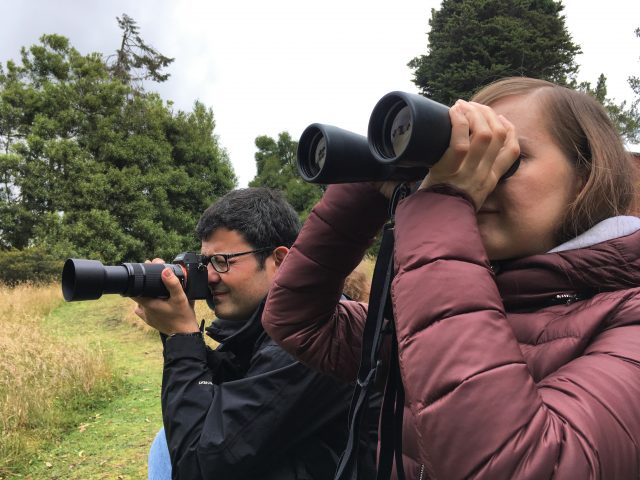
The Observatorio de Colibries is a birdwatcher and photographer’s dream.
After living in Bogotá for over four years, I am in awe of the beauty of Cundinamarca. I believe it has great potential as an ecotourism destination. Beyond bird-watching, I have helped harvest coffee at family-run coffee farms and hiked the almost other-worldly páramo ecosystem at Chingaza National Park. These places are all located a couple of hours from Bogotá. Ethical, community-led tourism has the potential to provide local people with an alternative to destructive farming practices. It could help generate a much-needed additional income and contribute to the sustainable development of these regions. This is especially true in former conflict zones, where the FARC has vacated vast areas of land, which are now available for development.
“In any region,” Chantelle tells me, “wildlife is worth more alive than dead. It has the potential to provide an income for local populations for many years to come if people take care of it.” Initiatives such the Hummingbird Observatory are few and far between. However, it could provide a conservation and economic model for others in the region.
If you would like to visit the Hummingbird Observatory (Observatorio de Colibries), contact Andes Ecotours for more information.
All photos were taken by me, Naomi Dalton, or by my guide and friend Chantelle du Plessis. Please ask for permission before using them.
If you have found this blog post informative or entertaining and would like to support the blog, you can now buy me a digital cup of coffee! 🙂
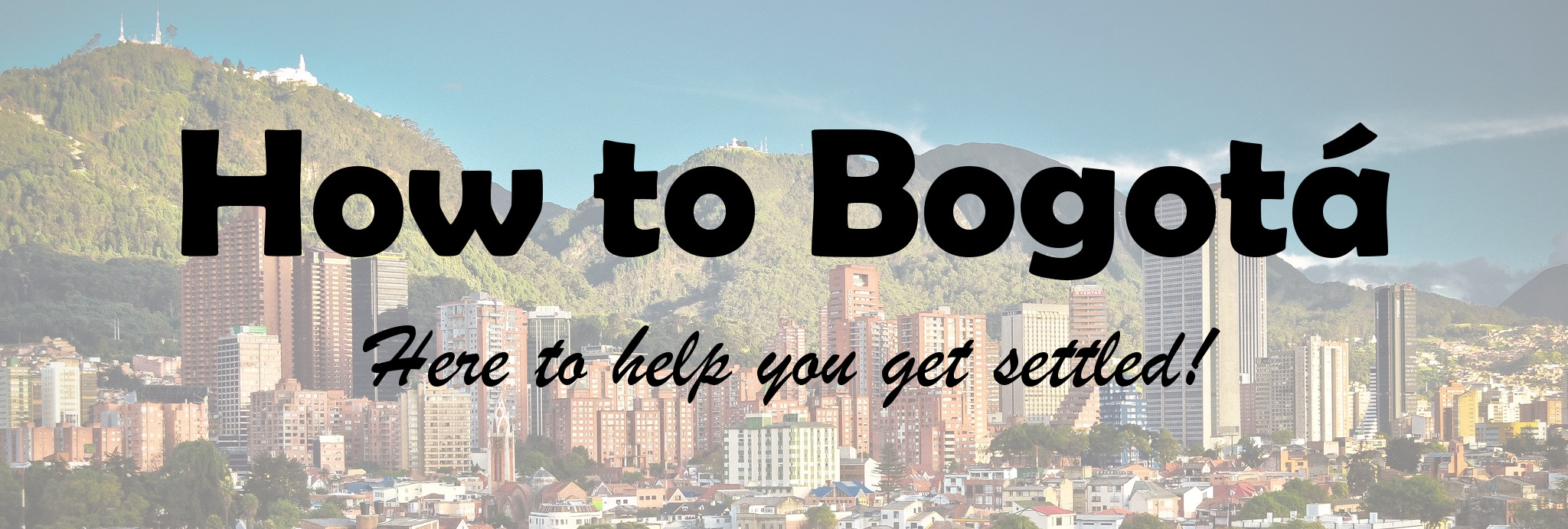
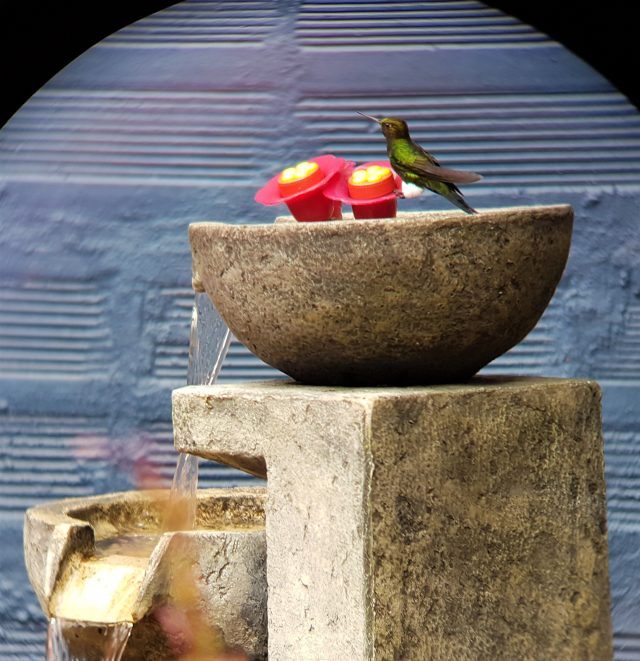
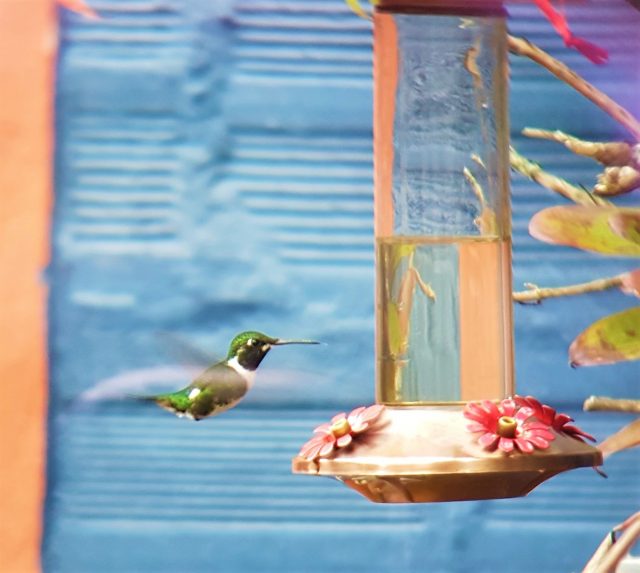
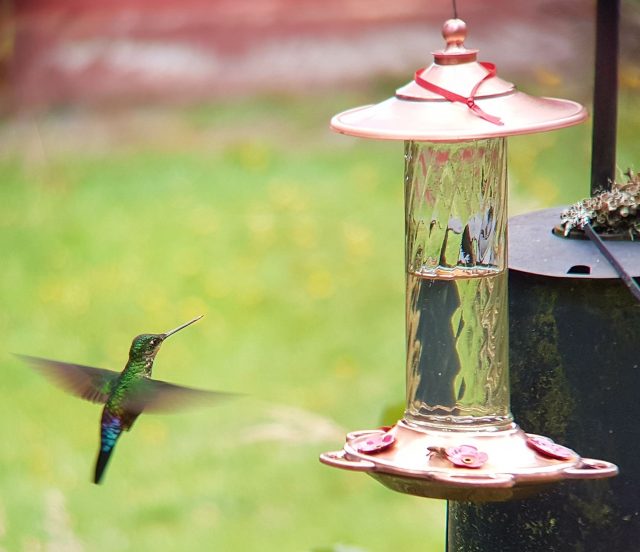
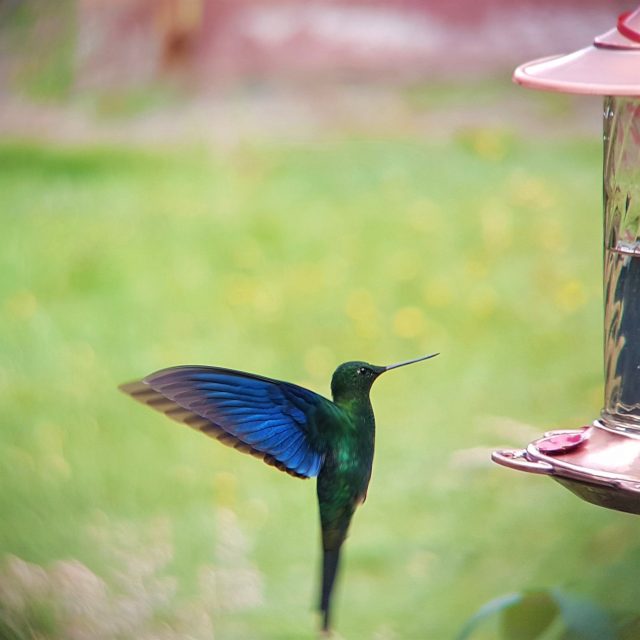
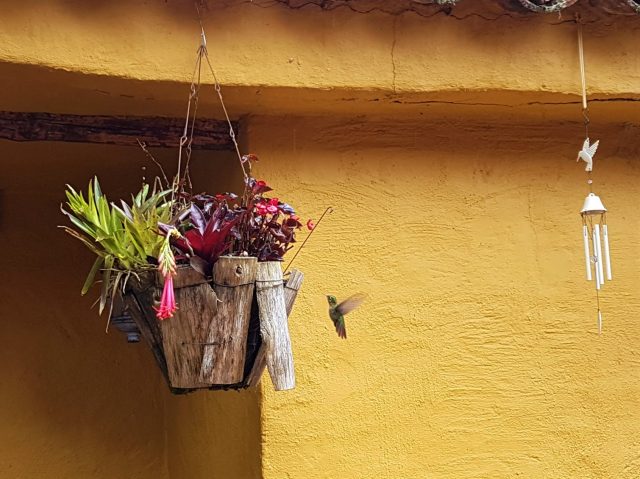
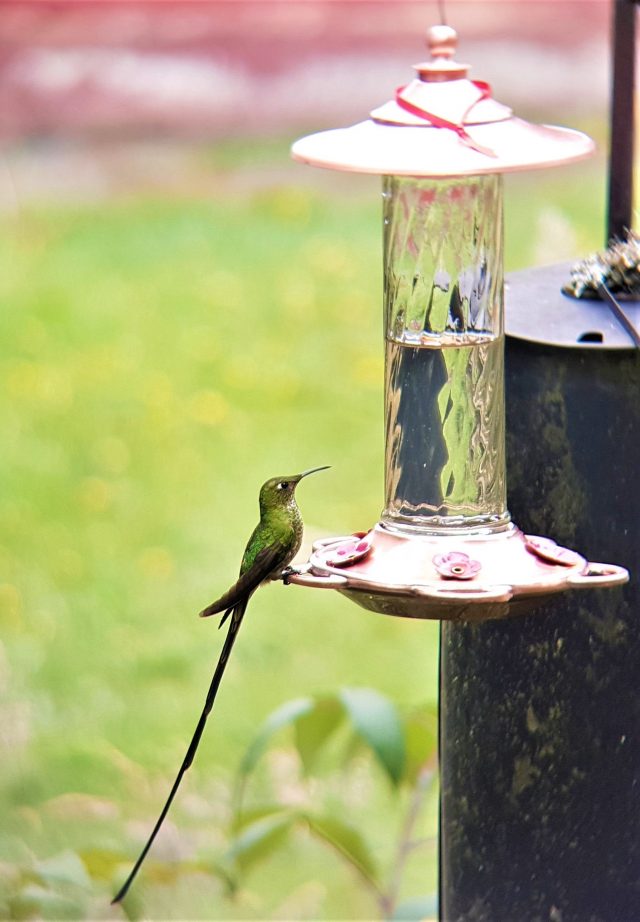
I will only be in Bogata for one day, Sunday, February 2nd. I will be staying at the Marriott. How far is the observatory from there? Is there a tour I can join. How long is the tour? What is the cost?
Hi Carol, I think there are two Marriotts – I guess you’ll be staying at the one in Salitre. The tour groups normally meet in Chapinero (about 30 mins in a taxi from Salitre) and from there it’s about 45 mins drive. Andes Ecotours do tours up there, but I’ve checked their website’s calendar and on that day they’re doing a Coffee and Chocolate Farm tour. I would email and see what they could offer on that day. http://www.andesecotours.com/calendar
You could also tell your hotel you would like to visit the hummingbird observatory in La Calera (they can find it on Google maps or going to the link on my blog) and I’m sure they could arrange for a driver to take you up there. Enjoy your trip!